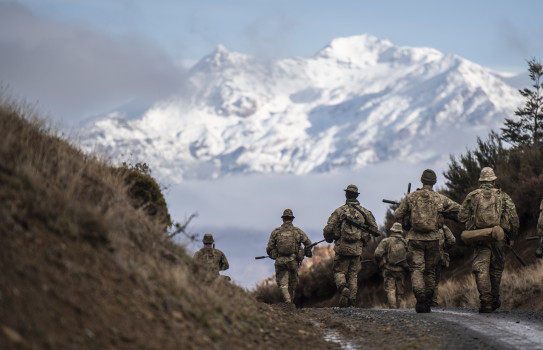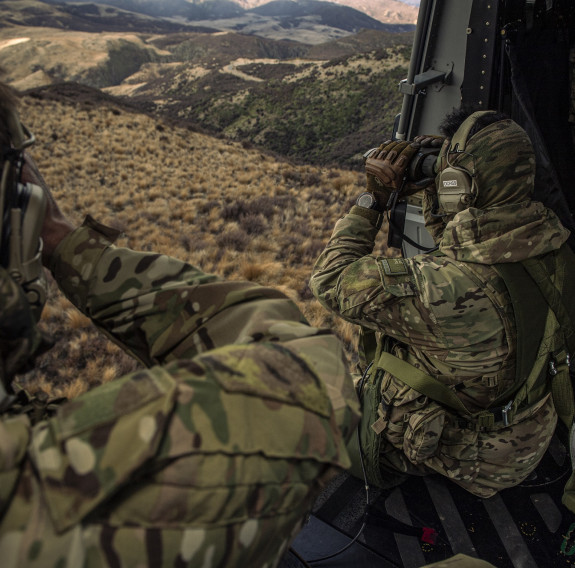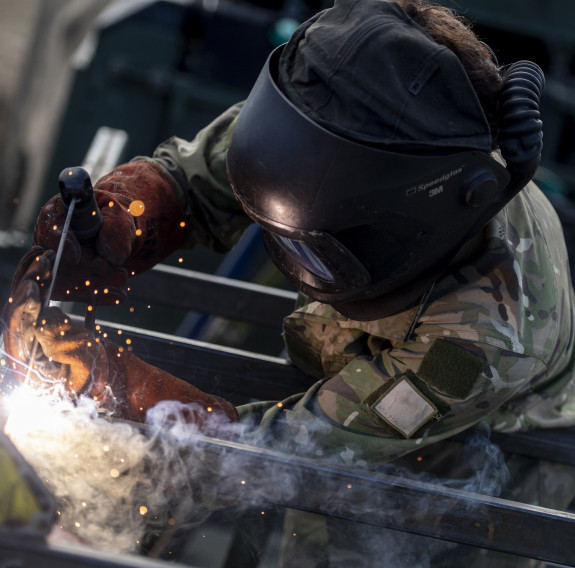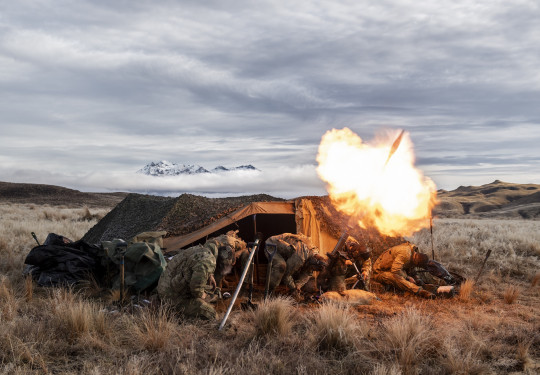NZ Army soldiers tested in tough conditions across trio of Waiouru exercises
More than 300 soldiers from 1st (NZ) Brigade and the Training and Doctrine Group battled biting winds and freezing temperatures across a series of live field firing and battle handling exercises at Waiouru Military Training Area.
01 July, 2024
Exercise Brimstone – a School of Artillery exercise supported by 16th Field Regiment – saw personnel conduct tactical missions by both day and night, and put junior leaders of the Royal New Zealand Artillery (RNZA) through their operational paces.
Exercise Vengeance 2 – a Victor Company, 1st Battalion, Royal New Zealand Infantry Regiment (1 RNZIR) exercise – enabled its soldiers train in close country (jungle-like) environmental conditions.
The third and final training scenario was Exercise Active Edge 2, a 2nd Combat Service Support Battalion exercise designed to test the deployment of a Combat Service Support Team (CSST). The CSST provided logistics support to both Exercises Brimstone and Vengeance 2, with transport, ammunition and, most importantly, food to the hundreds of cold, wet and hungry soldiers.
The exercises provided a valuable opportunity for soldiers to put theory into practice in a combined arms combat environment, and also enabled different parts of the Army to work together, generate training efficiencies, and see how well different units integrated.

Freezing temperatures at altitude tested soldiers’ resilience to withstand the cold for long periods of time and still maintain performance.
Major Oliver Lynn, Chief Instructor School of Artillery, said Exercise Brimstone was the culminating exercise for three School of Artillery courses – the Young Officers Course, Command Systems Sergeants Course and the Targeting Bombardier Course - where students were able to put theory into practice under live firing, field conditions within a tactical scenario.
The exercise was supported by 161 Battery, 16th Field Regiment, and saw the deployment of most elements of the Artillery ‘system’, including NZLAV mounted observers, armourers and logistical support, as well as the recently acquired Vector Scorpion uncrewed aerial system.
The opportunity to work with NH90 helicopters from the RNZAF’s No. 3 Squadron was an added bonus - an air mobile operation and an Air Observation Post were conducted, where the observers flew whilst conducting live calls for fire missions.
Run over two weeks, students were tested on their use and employment of the 81mm mortar, before moving on to the 105mm howitzer light gun.
“The exercise, and qualifications the students will acquire represent a major step up for our junior leaders who moved from being an operator within the system, to tactically commanding and leading their respective capabilities, and in some cases commanding their peers,” Major Lynn said.
Ten kilometres away, Ex Vengeance 2 saw Victory Company, 1 RNZIR, carrying out its own training and evaluation of its soldiers in close combat conditions.
The exercise included a complex set of tasks which incorporated aircraft, infantry, surveillance and reconnaissance, snipers, direct fire machine gun sections, signals, medics, intelligence operators and logistics personnel.

Royal New Zealand Air Force’s NH90 3 Squadron was involved in all three exercises – transporting troops, supplies and ammunition and relocating heavy artillery to different firing positions during battle and providing air operations.

Exercise Vengeance included a scenario with an injured soldier which tested our medics’ ability to treat and evacuate patients in the field.

Soldiers from Victor Company’s skills were tested – patrolling, ambushing, and attacking enemy positions in a close country (jungle like) environment. Around 40,000 rounds of rifle and machine gun ammunition was used during Exercise Vengeance.

A New Zealand Army maintenance fitter is constructing a trailer in the field during Exercise Active Edge.
Major Haedyn Jenkinson, Officer Commanding Victor Company, said the terrain in Waiouru was great to train in as it mirrored the different types of challenging environments they could expect to see on actual overseas operations.
“We need to be combat ready and able to move at short notice if the New Zealand Government calls on us to assist. It could be combat, or it could be to provide assistance after a cyclone or natural disaster,” Major Jenkinson said.
“Whatever the mission may be, we need to ensure our training prepares us for the vast number of situations and scenarios we may find ourselves in.”
Major Jenkinson said Ex Vengeance 2 built on earlier exercises which tested soldiers’ collective skills such as patrolling, ambushing, and both quick and deliberate attacks onto enemy positions in a close country environment.
Around 40,000 rounds of rifle and machine gun ammunition was used over the two weeks.
“This type of exercise provides invaluable training for our leaders as well as ensuring our interoperability with other units in a combined arms setting,” Major Jenkinson said.
